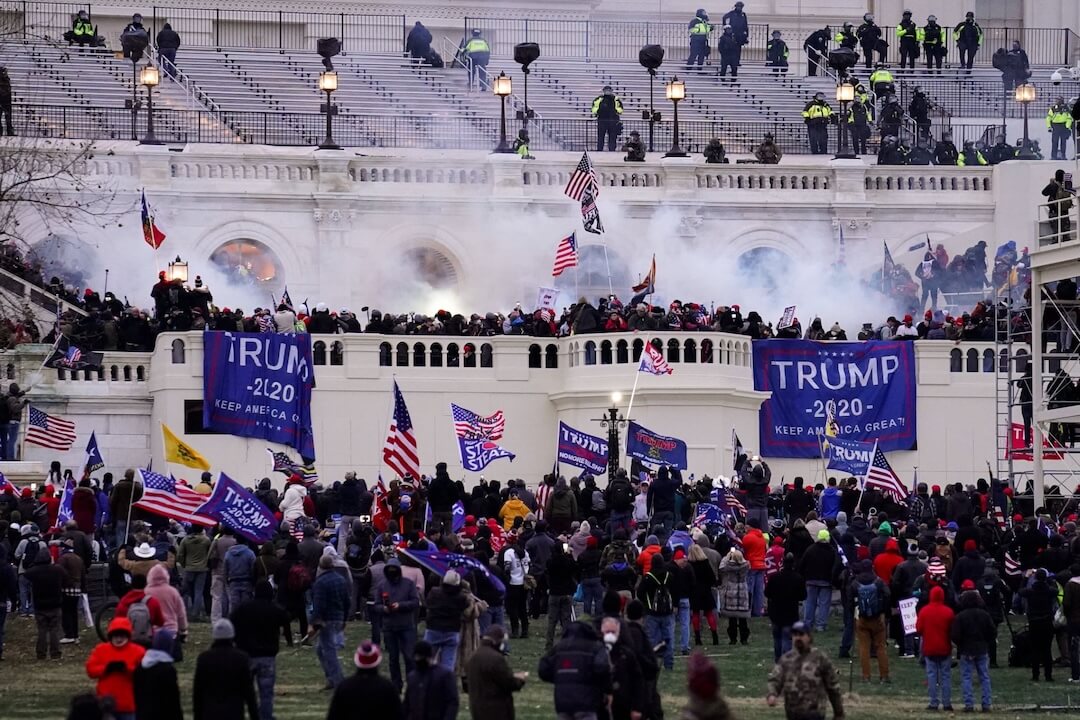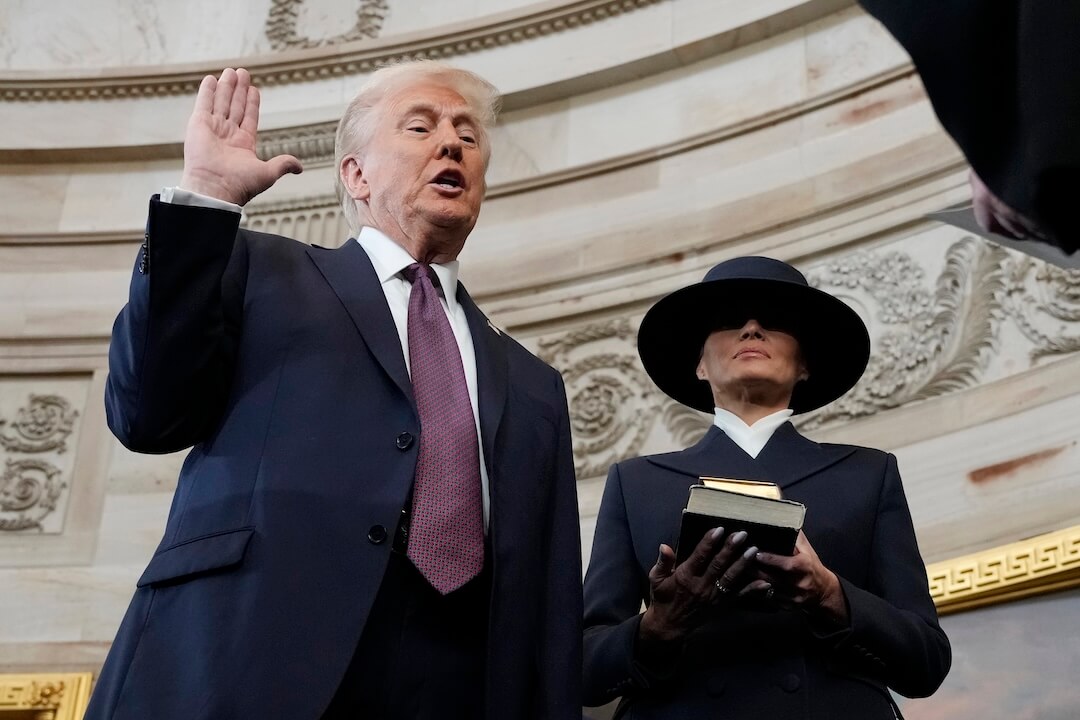When I was growing up in Princeton, Ky., folks would flock to two very public courts that featured considerable drama presented before big crowds. The basketball court at the local auditorium attracted hundreds of fans for big games. Interestingly, the size of that sports arena was smaller than the single largest room in the county — the two-story, Circuit courtroom that was the centerpiece of our Caldwell County courthouse.
As different as they were in purpose, those two good-size courts were designed to attract and accommodate all who could come.
Whatever happened was open for all to see, as it should have been.
Courtrooms should be open. The Supreme Court missed that point again this week (11/27/00) when it rejected a request from C-Span to provide television coverage of Friday’s proceedings in the Florida presidential election case. The court said it would quickly make available an audio tape of the proceedings, a step described as unprecedented in court history. But it’s not enough. People want to see with their own eyes the story as it is unfolding.
Friday’s proceedings will be witnessed live only by the lawyers and journalists lucky — or elite — enough to secure one of the high court’s 300 seats.
Chief Justice William Rehnquist provided no reasons in turning down C-Span, but I wonder how a couple of his predecessors would come down on the question.
Justice Oliver Wendell Holmes: “Every citizen should be able to satisfy himself with his own eyes” that justice is being conducted fairly.
RESOURCES | ||
Article: “Supreme Court denies Television Coverage of Presidential Case” RTNDA asks Supreme Court to allow cameras this week Busiek Testifies Before Senate Committee-read transcript State by State rules on Cameras in Courtrooms |
Justice Warren Burger: Opening courtrooms “gives assurance that proceedings were conducted fairly to all concerned, and it discourages perjury, the misconduct of participants and decisions based on secret bias or partiality.”
To be fair, they weren’t addressing the specific issue of cameras in the courtroom. But when you’re deciding the presidency of the United States, it’s hard to see the wisdom of restricting the audience to 300.
When I was a reporter, my executive producer, Greg Zoerb, used to urge me to get solid, documented proof for my stories. “If I don’t see it, it is hard for me to believe it,” he said to me over and over. I thought of him this week. I want to see the judicial system in action with my own eyes. Bring me the boring courtroom arguments in wall-to-wall coverage. Let me see that the court takes in all the evidence and wisely considers it.
I believe that the relative calm that has characterized the weeks after Election Day is attributable, in part, to the remarkable access enjoyed by the media in covering the story. Cameras have allowed the world to watch county and state courts to hear unedited and live arguments over how and when ballots are to be counted. The other night I watched what must have been 15 minutes of boring but reassuring video of West Palm County election officials sitting at a table staring at dimpled ballots. I was overcome with the feeling that the proceeding was orderly, fair and honest. Not the backroom politics I would have suspected if it had all been done in secret. “If I don’t see it,” I thought, “it is harder for me to believe it.”
Ironically, we as journalists dug our own hole on this issue. The restrictions go back to a landmark trial in 1965, the case of Billie Sol Estes v. Texas. Journalists and photographers covering that trial acted so outrageously that the Supreme Court slammed the door on cameras in the courts.
It took 15 years of appeals from news organizations for the Supreme Court to hear the matter again. In 1981, when cameras got quieter and needed no extra lights, the high court ruled that just having a camera in a courtroom is not, in itself, unconstitutional. That decision opened the way for cameras-in-the-courts experiments across the country, and 48 of 50 states now allow, in some form or another, camera coverage in courtrooms.
On September 6th, Dave Busiek, chairman of the Radio and Television News Directors Association, told a Senate hearing, “Because of the federal ban, the public has been deprived of the benefits of first-hand coverage not only at the district court level but at the appellate level.” He provided a list of significant issues that have come before the Court of Appeals in recent years in which the public had great interest but no right to witness: |
Today, 43 states allow coverage at the trial level, and studies in 28 states show that television coverage of court proceedings has significant social and educational benefits. Six federal districts and the Second and Ninth Circuit Court of Appeals launched a pilot program to test cameras in the courtrooms between 1991 and 1993 and the test was a resounding success. The test resulted in a recommendation that all federal courts should open their doors to cameras. But today, most federal courts remain closed with the exception of judicial swearing in or naturalization ceremonies.
The federal court ban on cameras in the courtroom is illogical. When Timothy McVeigh was tried in the Oklahoma City bombing case, a camera was used to send the trial proceedings closed circuit to families who could not travel to the Denver courthouse where the trial was being held. Nobody argued that the presence of the camera tainted the trial.
Even if one makes the argument that cameras intimidate witnesses, it does not explain the logic of banning cameras from appeals courts where Justices have total control over the decorum of the court. If lawyers choose to showboat, judges are free to shut them down.
There are some side benefits to having cameras in the courtroom. The public will hold journalists more accountable for the accuracy of coverage. At least some members of the public will have listened word for word what the journalists witnessed. Coverage is less likely to be spun, positioned or slanted when everyone has access to the unfettered truth.
If the Supreme Court is to open its doors to cameras, it has to be convinced that journalists will behave themselves and act professionally, recognizing the serious business of justice takes precedence over “good TV.”
The judicial system in my old home state of Kentucky may not have been perfect. But, the citizens of Princeton and Caldwell County knew that they had the ability to see and hear what took place in their courtroom. Given that access, they had the opportunity to be well informed and they could hold the system accountable by their presence.
These days, because of cost and space availability, they don’t build courtrooms like we had in my hometown. The new courtrooms often only seat a hundred or fewer people. There is no courtroom in the land physically large enough to seat the citizens who deserve access to important judicial moments like the one now playing out with the election controversy. But we have a way to give everyone who desires it a front row courtroom seat. A silent stationary camera can connect the people with their government.
I have covered hundreds of court hearings and trials in my 25 years as a journalist. I almost always walked away from the experience impressed by the seriousness and commitment of our judicial system and the people who work in it. I always thought the single best public relations the judiciary could make would be to allow the people to see the system as it really is. It is neither as neat and tidy as Perry Mason nor as dramatic as Matlock.
In the end, the banning of cameras from the courtroom serves only one purpose. It preserves the mystique and mystery of the court but does nothing to illuminate the citizens. That is antithetical to democracy.
Take Action
Journalists and news organizations should do more to gain access to courts.
- They should educate judges, lawmakers and attorneys about how cameras work. (As a television news director I often spoke to Bar Association gatherings and judicial conferences to help judges understand that we, as journalists, are serious about our role and are protective of their judicial duty.) After covering a hearing or trial, they should solicit and be responsive to concerns from judges and lawyers involved in proceedings.
- When a judge does grant permission for camera and audio coverage, journalists should strictly follow the rules of the court.
- Photographers and technicians should be in position in plenty of time to make their equipment and themselves as unobtrusive as possible.
- News organizations should live up to the rule in many states requiring 48 hour prior notification that a journalist intends to cover a trial or a hearing.
- Journalists must be knowledgeable of court rules and protocols. They should not air pictures or use audio of jurors when restricted by guidelines, and they should not broadcast the identities of witnesses the court orders to be protected.






